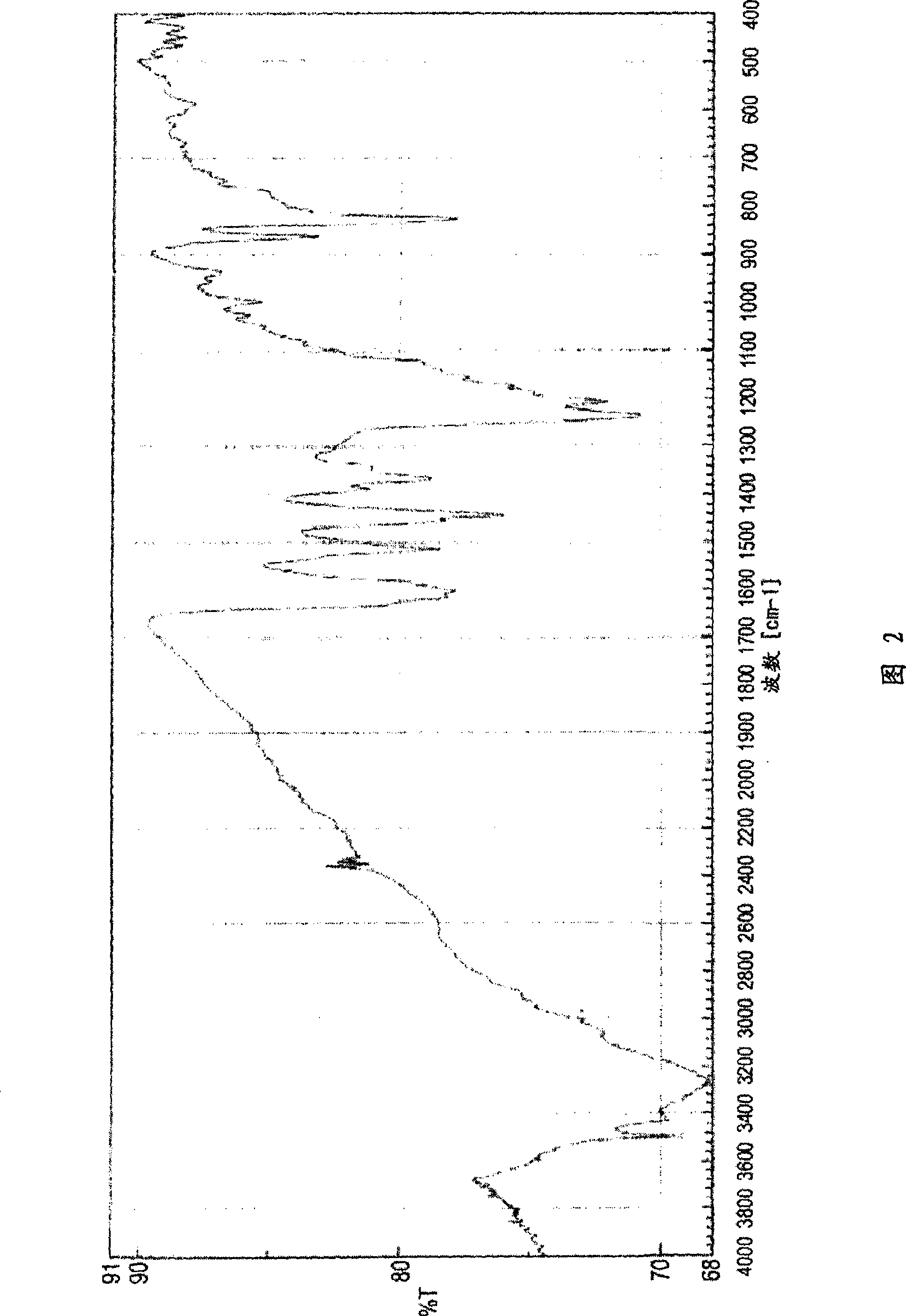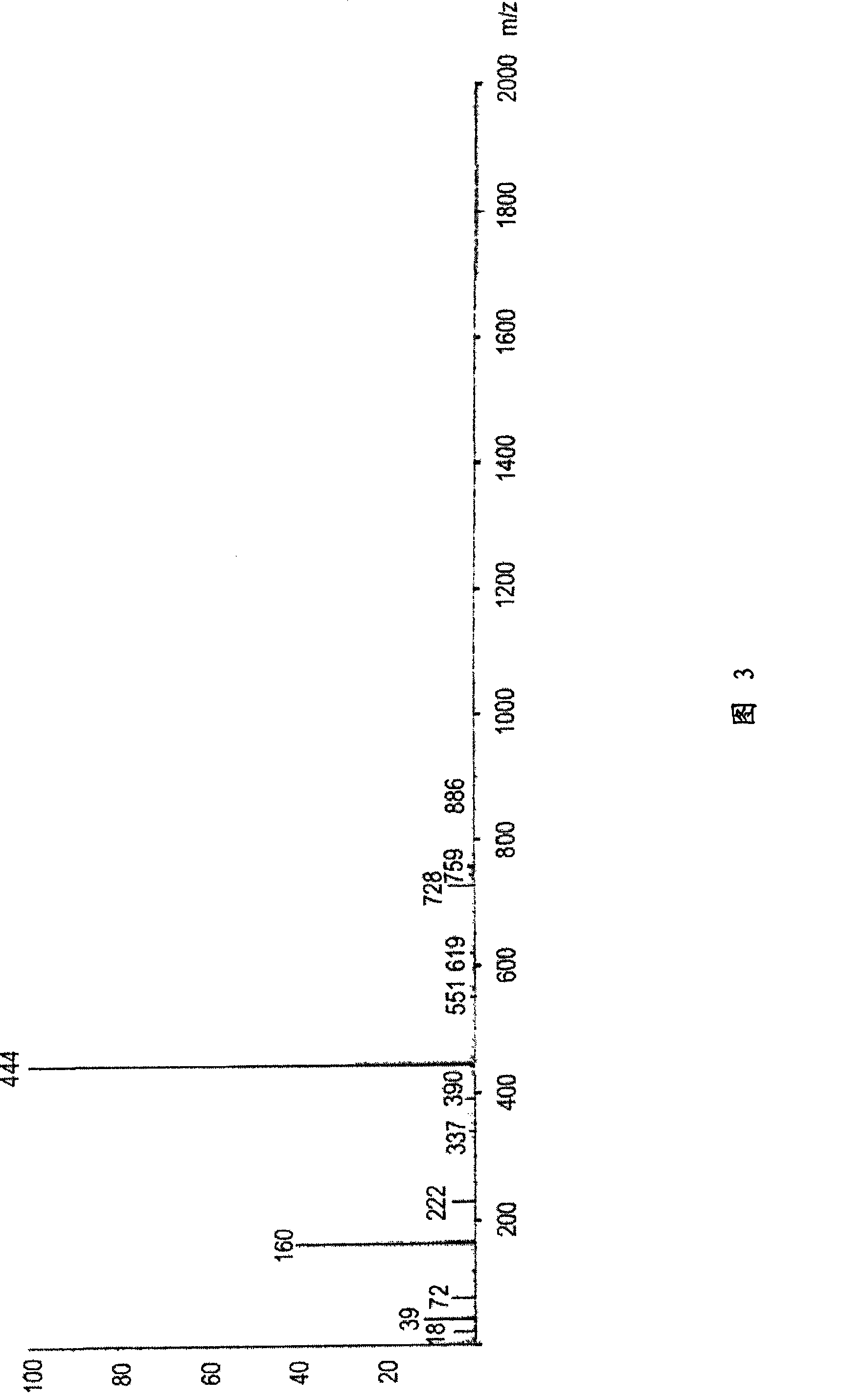Process for producing phenolic resin and process for producing epoxy resin
一种制造方法、酚树脂的技术,应用在环氧树脂的制造领域,能够解决无法得到固化物、固化时间慢等问题
- Summary
- Abstract
- Description
- Claims
- Application Information
AI Technical Summary
Problems solved by technology
Method used
Image
Examples
Embodiment 1
[0173] Example 1 [Synthesis of Phenol Resin (a-1)]
[0174] In the flask that thermometer, dropping funnel, cooling tube, fractionating tube, stirrer are installed, 2,7-dihydroxynaphthalene represented by 160g (1.0mol) of the following formula is charged,
[0175] [chemical 17]
[0176]
[0177] While blowing in nitrogen gas and stirring, it was heated to 200° C. and melted. After melting, 23 g (0.2 mol) of 48% potassium hydroxide aqueous solution were added. Then, water derived from a 48% potassium hydroxide aqueous solution and generated water were extracted using a fractionating tube, and then reacted for another 5 hours. After the reaction was finished, 1000 g of methyl isobutyl ketone was added, and after dissolving, it was transferred to a separatory funnel. Next, after washing with water until the washing water becomes neutral, the solvent was removed from the organic layer under reduced pressure under heating to obtain 150 g of phenol resin (1). The obtained pheno...
Embodiment 2
[0195] Embodiment 2 [synthesis of phenol resin (a-2)]
[0196] Except changing 160g of 2,7-dihydroxynaphthalene in Example 1 to 160g of 1,6-dihydroxynaphthalene, it carried out similarly to Example 1, and obtained 147g of phenol resin (a-2). The obtained phenol resin (a-2) was a brown solid with a hydroxyl equivalent of 135 g / eq and a melting point of 137°C. From the GPC chart of FIG. 5 , it was confirmed that the remaining rate of the unreacted raw material (1,6-dihydroxynaphthalene) was 24% by area ratio as measured by GPC.
Embodiment 3
[0197] Embodiment 3 [synthesis of phenol resin (a-3)]
[0198] Except changing 160g 2,7-dihydroxynaphthalene in embodiment 1 to 80g (0.5mol) 2,7-dihydroxynaphthalene and 55g (0.5mol) 1,3-dihydroxybenzene, same as embodiment 1 This was carried out to obtain 125 g of phenol resin (a-3). The obtained phenol resin (a-3) was a brown solid with a hydroxyl equivalent of 101 g / eq and a melting point of 136°C. From the GPC chart of FIG. 6 , it was confirmed that the remaining ratio of unreacted raw materials (total of 2,7-dihydroxynaphthalene and 1,3-dihydroxybenzene) was 36% by area ratio as measured by GPC.
PUM
| Property | Measurement | Unit |
|---|---|---|
| boiling point | aaaaa | aaaaa |
| melting point | aaaaa | aaaaa |
| melting point | aaaaa | aaaaa |
Abstract
Description
Claims
Application Information
 Login to View More
Login to View More - R&D
- Intellectual Property
- Life Sciences
- Materials
- Tech Scout
- Unparalleled Data Quality
- Higher Quality Content
- 60% Fewer Hallucinations
Browse by: Latest US Patents, China's latest patents, Technical Efficacy Thesaurus, Application Domain, Technology Topic, Popular Technical Reports.
© 2025 PatSnap. All rights reserved.Legal|Privacy policy|Modern Slavery Act Transparency Statement|Sitemap|About US| Contact US: help@patsnap.com



